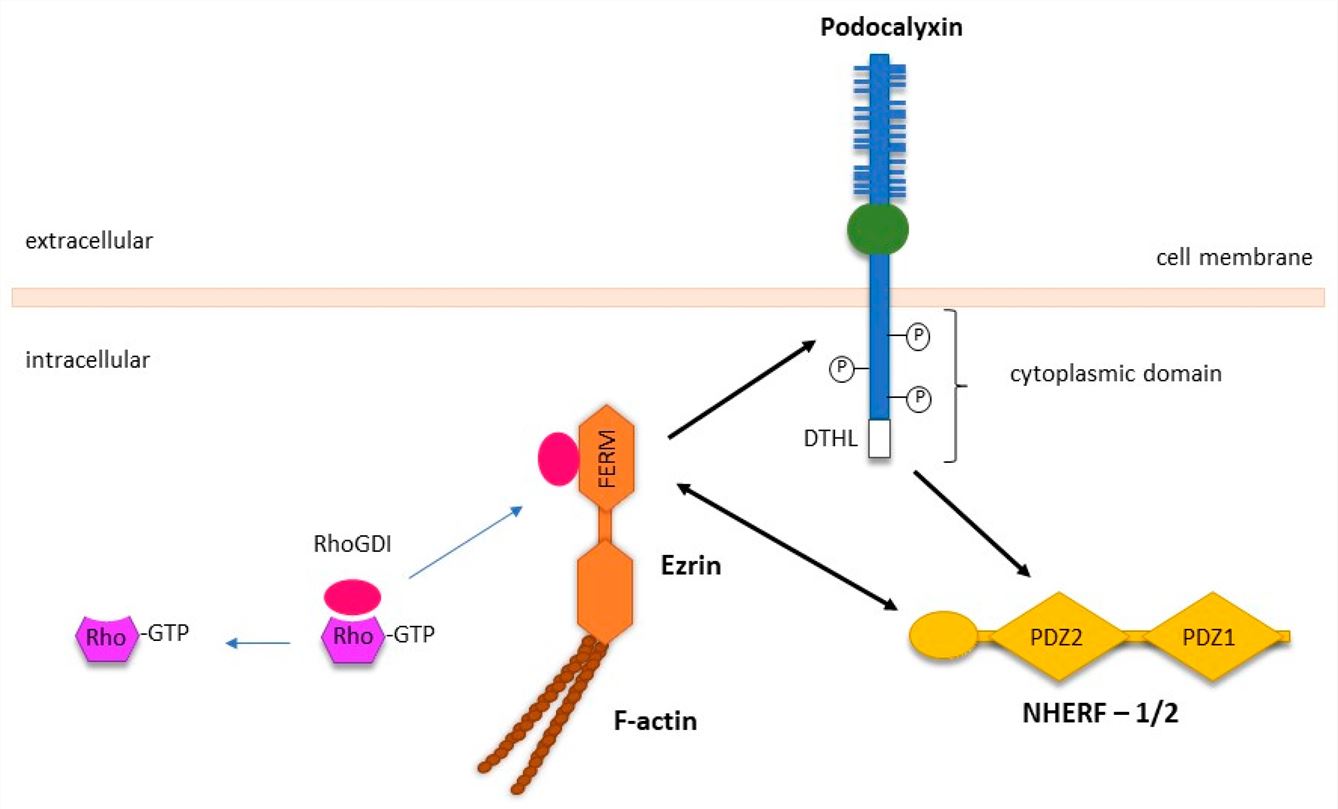What is PODXL Protein?
The PODXL gene, responsible for the encoding of the Podocalyxin-like (PODXL) protein, was discovered in the late 1980s. Researchers identified this protein during an investigation into proteins significant for kidney function, specifically those in the kidneys' glomerular podocytes cells. The PODXL gene is situated on the HSA7q32-q33 gene locus of the seventh chromosome. It consists of eleven exons and encodes a 558 amino acids long transmembrane protein.
What Is The Structure of PODXL Protein?
The PODXL protein falls under the category of sialomucins, which belongs to a highly conserved family of cell surface glycoproteins. It contains a long, highly glycosylated extracellular domain, a single transmembrane domain, and a short cytoplasmic tail. This structure allows the protein to function primarily as an anti-adhesive molecule, influencing cell morphology and migration.

Fig1. Structure of PODXL
What Is The Function of PODXL Protein?
The function of the PODXL protein is crucial in embryogenesis and organ development. This protein is also vital in maintaining the permeability barrier properties of the kidney glomerular podocytes, which protect against proteinuria. Additionally, PODXL also influences cell morphogenesis, adhesion, and migration through its regulation of cell surface structures.
PODXL protein related signal pathway
The signal pathway of the PODXL protein has been linked to the Phosphatidylinositol 3-kinase (PI3K)/Akt and the RhoA/Rho kinase signaling pathway. They assist with cytoskeletal organization, cell mobility, and survival. Moreover, PODXL-induced signaling has shown a role in maintaining the stemness of cancer stem cells via pathways involving PI3K/Akt and Wnt/β-catenin.
PODXL protein related diseases
However, the elevation of PODXL protein expression correlates with many diseases. Overexpression of PODXL has been identified as a marker of poor prognosis in numerous cancers, including kidney, colon, bladder, breast, and pancreatic cancers. It facilitates tumor cell survival, proliferation, invasion, metastasis, and cancer cell stemness.
In chronic kidney diseases (CKDs) and several glomerulopathies, the disappearance of PODXL from podocytes indicates podocyte injury. In addition, PODXL also contributes to respiratory diseases by maintaining the barrier and transport functions of the airway epithelium. Its dysfunction results in abnormal mucus production and mucociliary clearance, leading to chronic obstructive pulmonary disease (COPD) conditions.
PODXL protein's applications in biomedical
From a biomedical perspective, the PODXL protein promises extensive applications. Its ability to affect cell adhesion and migration points towards its potential use in wound healing therapies. Furthermore, its overexpression in numerous cancers has prompted its investigation as a marker for diagnosis and prognosis, as well as a target for potential therapeutics. In cancer treatment research, PODXL might be employed to develop anti-cancer drugs that aim at reducing tumor proliferation and metastasis.
In CKDs and glomerulopathies, the detection of PODXL in urine samples could potentially act as a non-invasive biomarker for the diagnosis and prognosis of these diseases. Also, since the loss of PODXL contributes to respiratory diseases, its restoration might be a potential therapeutic method for such conditions.
In conclusion, the PODXL protein plays an essential part in the cellular realm. Its roles in cell adhesion, migration, and various signaling pathways demonstrate its value, shown by its contribution to organ development and homeostasis. However, its overexpression or loss prompts several diseases, including cancers and kidney and pulmonary diseases. Nevertheless, its involvement in these diseases opens new avenues for its application in biomedical fields, highlighting its untapped and emerging potential as a diagnostic, prognostic, and therapeutic tool.
Our Featured Products
| Cat.No. | Product Name | Species | Source (Host) | Tag |
|---|---|---|---|---|
| PODXL-32H | Recombinant Human PODXL protein, MYC/DDK-tagged | Human | HEK293 | Myc/DDK |
| PODXL-1823H | Recombinant Human PODXL, GST-tagged | Human | E.coli | GST |
| PODXL-0402H | Recombinant Human PODXL protein, His-tagged | Human | E.coli | His |
| PODXL-3885H | Recombinant Human PODXL Protein, His (Fc)-Avi-tagged | Human | HEK293 | His (Fc)-Avi |
| PODXL-02H | Recombinant Human PODXL Protein, His-tagged | Human | HEK293 | His |
Reference
- Le Tran, N., Wang, Y., & Nie, G. (2020). Podocalyxin in Normal Tissue and Epithelial Cancer. Cancers, 13(12), 2863. https://doi.org/10.3390/cancers13122863


